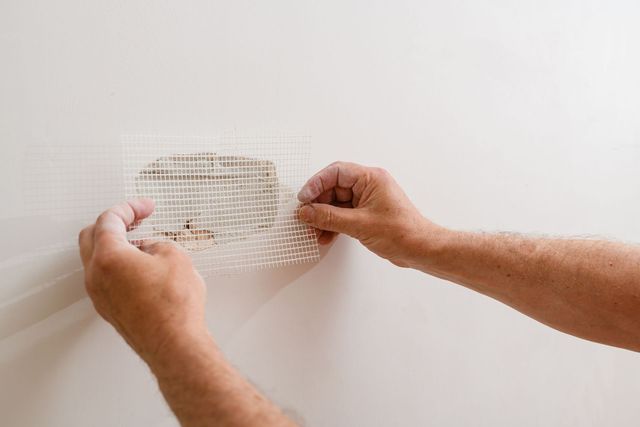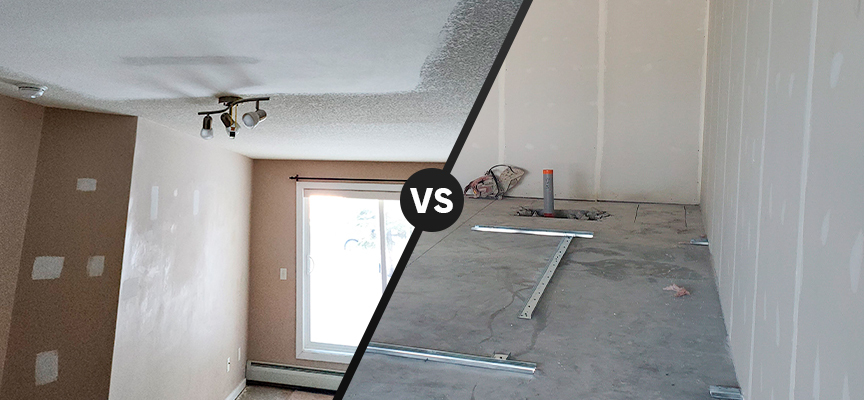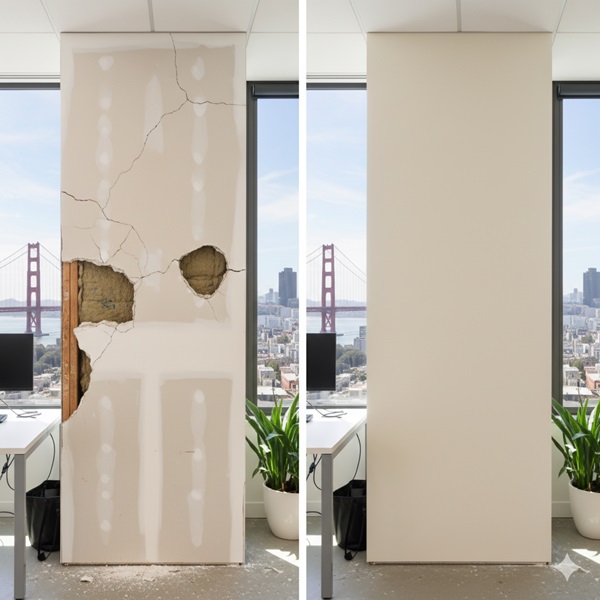A Comprehensive Overview to Mastering Drywall Repair Service and Setup
This overview supplies a thorough expedition of drywall repair service and setup, providing to both newbies and seasoned professionals. It details important tools, methods for patching and hanging sheets, and the critical completing procedures. Interior Painting. By comprehending typical challenges, people can attain sleek results. Mastering these abilities not only improves one's home but likewise constructs self-confidence in do it yourself endeavors. What foundational suggestions will ensure an effective job from beginning to end?
Necessary Devices for Drywall Repair Work and Installment
When beginning on drywall repair and installation, a couple of crucial devices can greatly enhance the efficiency and quality of the job. A drywall knife, generally offered in different dimensions, is important for using joint substance and smoothing seams. A taping knife is likewise essential for feathering sides and ensuring a smooth coating. In addition, a drywall saw or energy blade enables for accurate cutting of drywall sheets to fit any type of area.

Step-by-Step Overview to Patching Holes
Covering openings in drywall is a simple process that can bring back the wall surface's look and integrity. To begin, the location around the opening need to be cleaned and any type of loose debris got rid of. For small openings, a basic spackle or joint substance can be used with a putty knife. Larger openings might need a spot; an item of drywall can be cut to fit the hole, safeguarded with adhesive or screws, and afterwards taped around the sides. Once the spot remains in place, joint substance is used over the patch and feathered out to blend with the bordering wall surface. After the compound dries, sanding is essential to achieve a smooth finish. Lastly, the repaired area can be keyed and painted to match the rest of the wall. This approach assures a smooth repair, enhancing the overall appearance of the drywall and keeping its structural stability.
Methods for Hanging Drywall Sheets
After efficiently repairing holes in drywall, the next action entails hanging brand-new drywall sheets to develop a smooth surface. To achieve this, one should begin by gauging the wall space accurately and reducing the drywall sheets to fit. It is vital to hang the sheets flat for much better structural integrity, beginning with the top and functioning downwards.
Using a drywall lift can simplify the procedure, specifically for ceiling installations. As soon as placed, protecting the sheets with drywall screws at periods of regarding 12 inches along the sides and 16 inches in the area is important. This assures a solid hold and reduces the threat of drooping. For corners, the sheets must be reduced to fit well, permitting cleaner joints. It is suggested to surprise the joints between sheets to enhance the total structure, creating a more resilient finish ready for the following stage in the drywall installment process.
Completing Touches: Insulation and Mudding
Completing the drywall more info installation entails the important actions of mudding and taping, which guarantee a smooth and sleek surface. Taping requires the application of joint tape over the seams between drywall sheets. drywall contractor. This tape can be either paper or fiberglass harmonize, with each kind offering one-of-a-kind benefits. After taping, the following step is mudding, where joint substance, or "mud," is related to cover the tape and fill any type of imperfections
Making use of a drywall blade, the compound must be spread uniformly, making certain a feathery side to reduce visible changes. Several layers are frequently required, with sanding in between each layer to attain a smooth surface area. Mindful focus throughout this process is essential, as it significantly influences the last appearance of the wall surface. With the appropriate method and perseverance, completion outcome will certainly be a remarkable foundation prepared for paint or ending up touches.
Usual Errors to Stay Clear Of in Drywall Projects

An additional typical blunder is not enabling adequate drying time in between coats, which can trap wetness and endanger the surface. Additionally, ignoring to feather the sides appropriately can produce noticeable lines and imperfections. Skipping sanding or using incorrect methods may leave rough spots. By recognizing these risks, people can substantially boost the quality of their drywall projects and achieve a professional-looking surface.
Regularly Asked Concerns
Can I Repair Drywall Without Professional Aid?
Yes, one can fix drywall without specialist help. With the right tools, products, and assistance, individuals can effectively manage minor fixings. Nonetheless, substantial damage might require specialist expertise for perfect outcomes and sturdiness.
For How Long Does Drywall Substance Take to Dry?
Drywall compound commonly takes between 24 to 2 days to completely dry entirely, relying on aspects such as moisture and temperature level. Thinner layers might dry faster, while thicker applications require even more time for excellent results.
What's the Best Kind Of Paint for Drywall?
The most effective type of paint for drywall is normally a water-based latex paint. It offers superb coverage, durability, and convenience of application, making it perfect for indoor walls while permitting simple cleaning with soap and water.

Exactly how Do I Stop Mold on Drywall?
To avoid mold on drywall, warranty appropriate ventilation, control moisture degrees, make use of mold-resistant products, and without delay attend to any type of leakages. Routine examinations and immediate remediation of water damage are likewise necessary for lasting prevention.
Is Drywall Recyclable After Removal?
Drywall is recyclable after removal, offered it is devoid of contaminants like mold and mildew, paint, or various other unsafe products. Recycling facilities can refine it into new products, promoting sustainability and reducing land fill waste in building.
When starting on drywall repair and installation, a couple of crucial devices can substantially boost the effectiveness and quality of the job. After efficiently fixing holes in drywall, the following action includes hanging new drywall sheets to develop a seamless surface area. Completing the drywall installment entails the important actions of taping and mudding, which assure a smooth and sleek finish. Attaining a refined finish in drywall jobs can be tough, and several typical errors can weaken the top quality of the job. Yes, one can repair drywall without expert help.